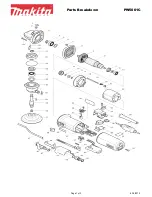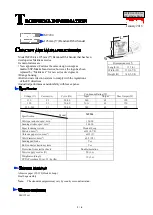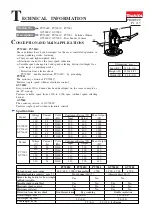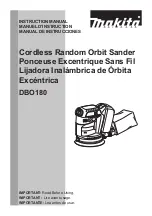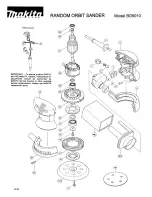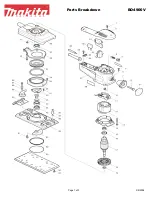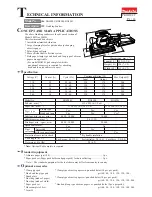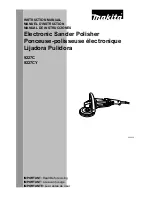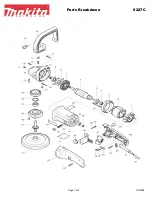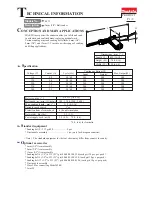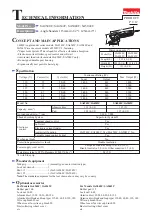
GB
31
If you can’t fix the fault yourself, contact your nearest
vendor. Please be aware that any improper repairs
will also invalidate the warranty and additional costs
may be incurred.
Disposal
Disposal of the appliance
A crossed-out wheelie bin icon means: Bat-
teries and rechargeable batteries, electrical
or electronic devices must not be disposed of
with household waste. They may contain
substances that are harmful to the environ-
ment and human health.
Consumers must dispose of waste electrical devices,
spent portable batteries and rechargeable batteries
separately from household waste at an official collec-
tion point to ensure that these items are processed
correctly. Information on returning these items is
available from the seller. Sellers are required to
accept these items free of charge.
Batteries and rechargeable batteries, which
are not permanently installed in waste elec-
trical devices, must be removed prior to dis-
posal and must be disposed of separately.
Lithium batteries and battery packs in all systems
must only be retuned to a collection point when dis-
charged. Batteries must always be protected against
short circuits by covering the poles with adhesive
tape.
All end users are responsible for deleting any per-
sonal data stored on waste devices prior to their dis-
posal.
Disposal of the packaging
The packaging consists of cardboard and
correspondingly marked plastics that can
be recycled.
– Make these materials available for
recycling.
Technical data
*)
The specified values are emission values and do not necessarily
represent safe workplace values. Although there is a correlation
between emission and immission levels, this cannot be used to
infer whether additional safety measures are necessary or not.
Factors which affect the current immission levels at the work-
place, include the type of room, other sources of noise, e. g. the
number of machines operating and other processes taking
place in the vicinity. Permitted workplace values can differ from
country to country. This information is designed to help the user
to better assess the dangers and risks. Determination of noise
emission values in accordance with EN 60745-1.
**) The specified vibration emission value was measured in accord-
ance with a normed test procedure and can be used in order to
compare one tool with another. The specified vibration emission
value can also be used for an introductory evaluation of the
exposure. The vibration emission value may fluctuate from the
specified value during actual use of the power tool. These fluc-
tuations will depend on the way in which the power tool is used.
Try to keep vibrations to a minimum. One method of reducing
the vibration load is, for example, limiting the length of time you
work with the tool. All parts of the operating cycle must be taken
into account for this purpose (for example, also including times
in which the power tool is switched off and times in which it is
switched on, but is running without load). Determination of vibra-
tion emission values in accordance with EN 60745-1 &
EN 60745-2-3.
Hose clogged or bent?
Remove the clogging or straighten
the bend.
Collection bag not carried proper-
ly?
Carry the collection bag with the
hose facing forward during opera-
tion.
Extraction effect set too low?
Increase extraction effect (
Collection bag full?
Empty collection bag.
Too strong abrasion of the material to
be processed.
Speed too high?
Too coarse graining of the abra-
sive?
Select finer graining.
Suction effect too strong?
Reduce suction effect (
Not optimal surface quality.
Wrong abrasive graining?
Select appropriate graining.
Drying time of filler not adhered to? Observe the technical data sheets
and recommendations of the manu-
facturer.
Filler material with high filler con-
tent, soft filler?
Select finer graining.
Placed onto the surface with the
machine running (scoring)?
Place the machine onto the material
before switching on.
Suction effect too strong?
Reduce suction effect (
Product is not sanding smoothly.
Too hard filler or hard subsurface? Reduce speed (
Fault/malfunction
Cause
Remedy
Material number
107354
Mains voltage
230 V~, 50 Hz
Rated output
750 W
Protection class
II
Idling speed
610-2150 min
-1
Dimensions of sanding plate
ø180 mm
Sound power level (L
WA
)*
90,5 dB(A)
(K = 3 dB(A))
Sound pressure level (L
PA
)*
79,5 dB(A)
(K = 3 dB(A))
Vibration**
4,441 m/s²
(K = 1,5 m/s²)
Weight
3,1 kg
Содержание C-TBS-750
Страница 3: ...3 7 6 5 9 8 1 2 3 4 1 2 1 10 2 11 5 3 11 12 4...
Страница 73: ...RU 73 73 73 77 77 78 78 78 78 79 80 118...
Страница 74: ...RU 74...
Страница 75: ...RU 75...
Страница 76: ...RU 76...
Страница 77: ...RU 77 3 1 1 2 3 4 5 6 7 8 9 6 3 2 1 2 10 11 5 11 12...
Страница 78: ...RU 78 4 3 4 3 4 2 6 1 610 min 1 2 720 min 1 3 850 min 1 4 1600 min 1 5 1850 min 1 6 2150 min 1...
Страница 79: ...RU 79 78 78 78 78 78 78...
Страница 81: ...GR 81 81 81 85 85 86 86 86 86 87 88 122 o 7...
Страница 82: ...GR 82 C...
Страница 83: ...GR 83 C C 5 o...
Страница 84: ...GR 84 1 7 7 T o LED...
Страница 85: ...GR 85 3 1 1 ON OFF LED 2 3 4 ON OFF 5 6 7 8 LED 9 6 3 2 1 2 10 11 5 11 12...
Страница 87: ...GR 87 T 86 86 86 86 7 86 86...
Страница 110: ...KAZ 110 110 110 114 114 115 115 115 115 116 116 123...
Страница 111: ...KAZ 111...
Страница 112: ...KAZ 112...
Страница 113: ...KAZ 113 i...
Страница 114: ...KAZ 114 3 1 1 2 3 4 5 6 7 8 9 6 3 2 1 2 10 11 5 11 12...
Страница 115: ...KAZ 115 4 3 4 3 4 2 6 I 1 610 1 2 720 1 3 850 1 4 1600 1 5 1850 1 6 2150 1 I I...
Страница 116: ...KAZ 116 115 115 115 115 115 115 107354 230 50 750 II 610 2150 1 180...
Страница 117: ...KAZ 117 EN 60745 1 EN 60745 1 EN 60745 2 3 LWA 90 5 dB A K 3 dB A LPA 79 5 dB A K 3 dB A 4 441 K 1 5 3 1 107354...
Страница 118: ...118 RU 1 2 24 3...
Страница 119: ...119 4 20 13109 97...































